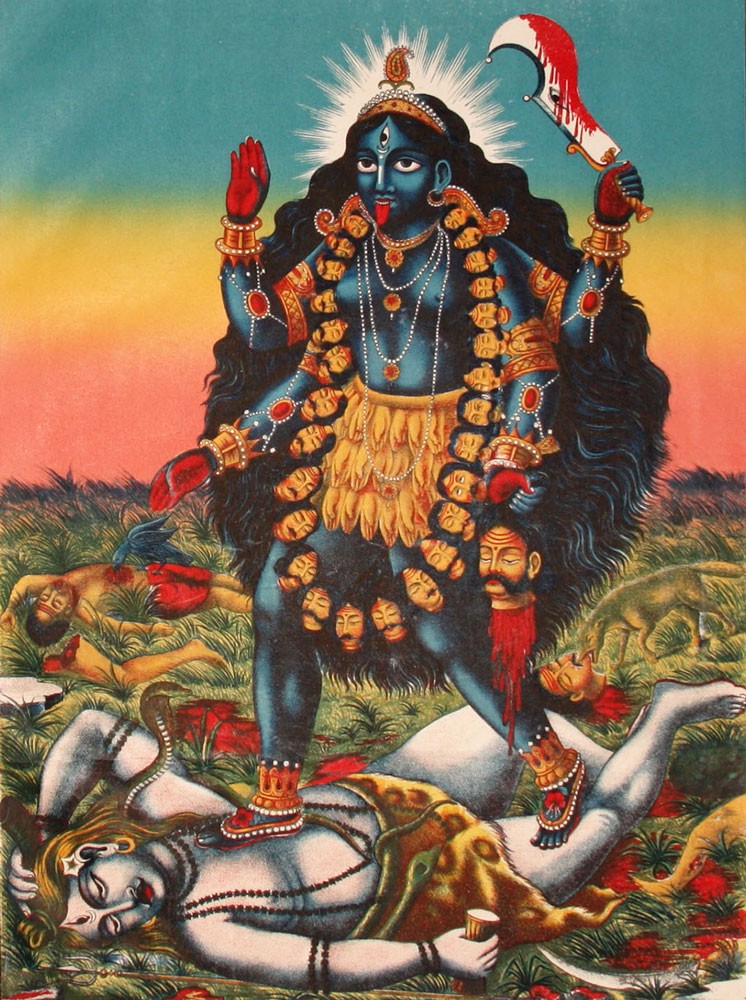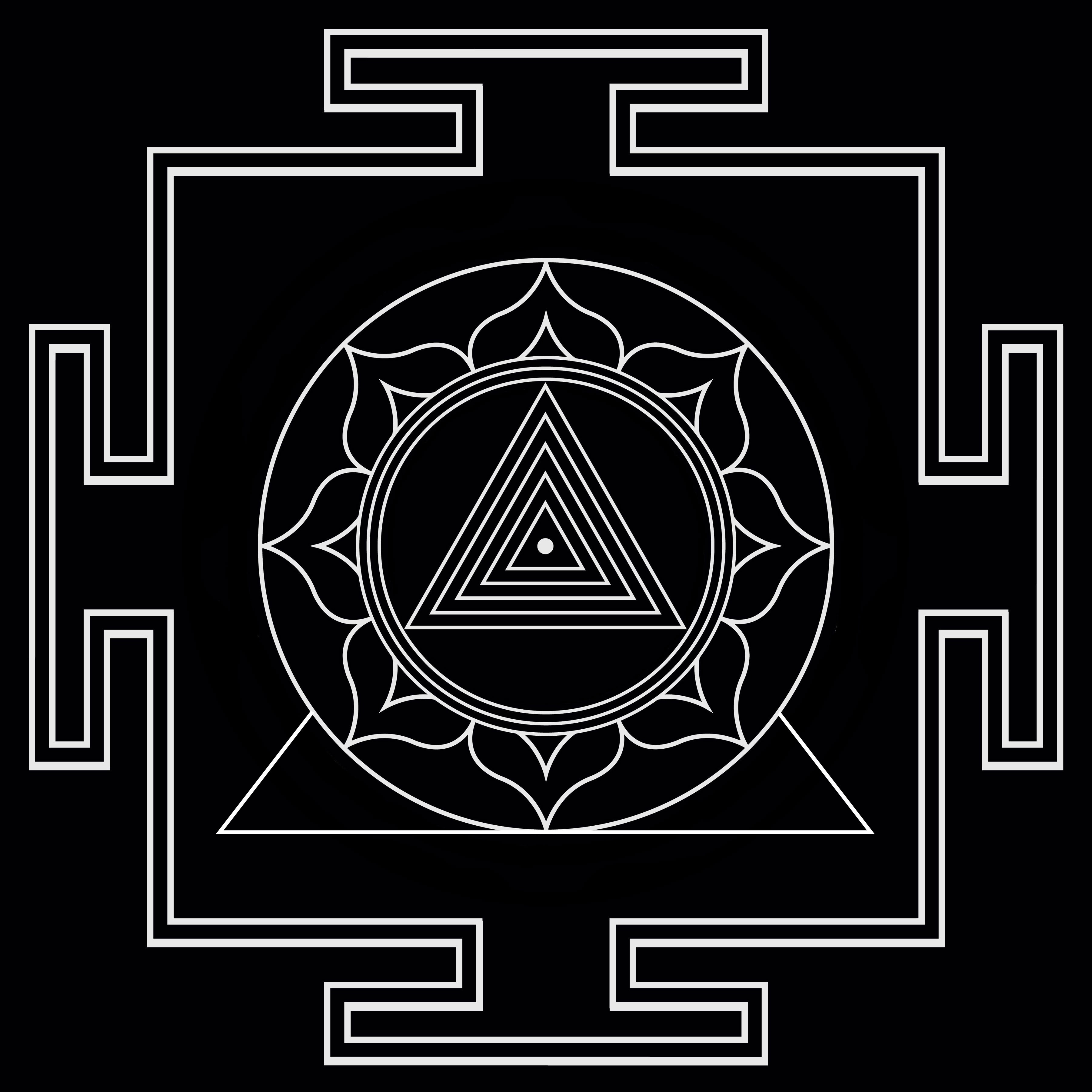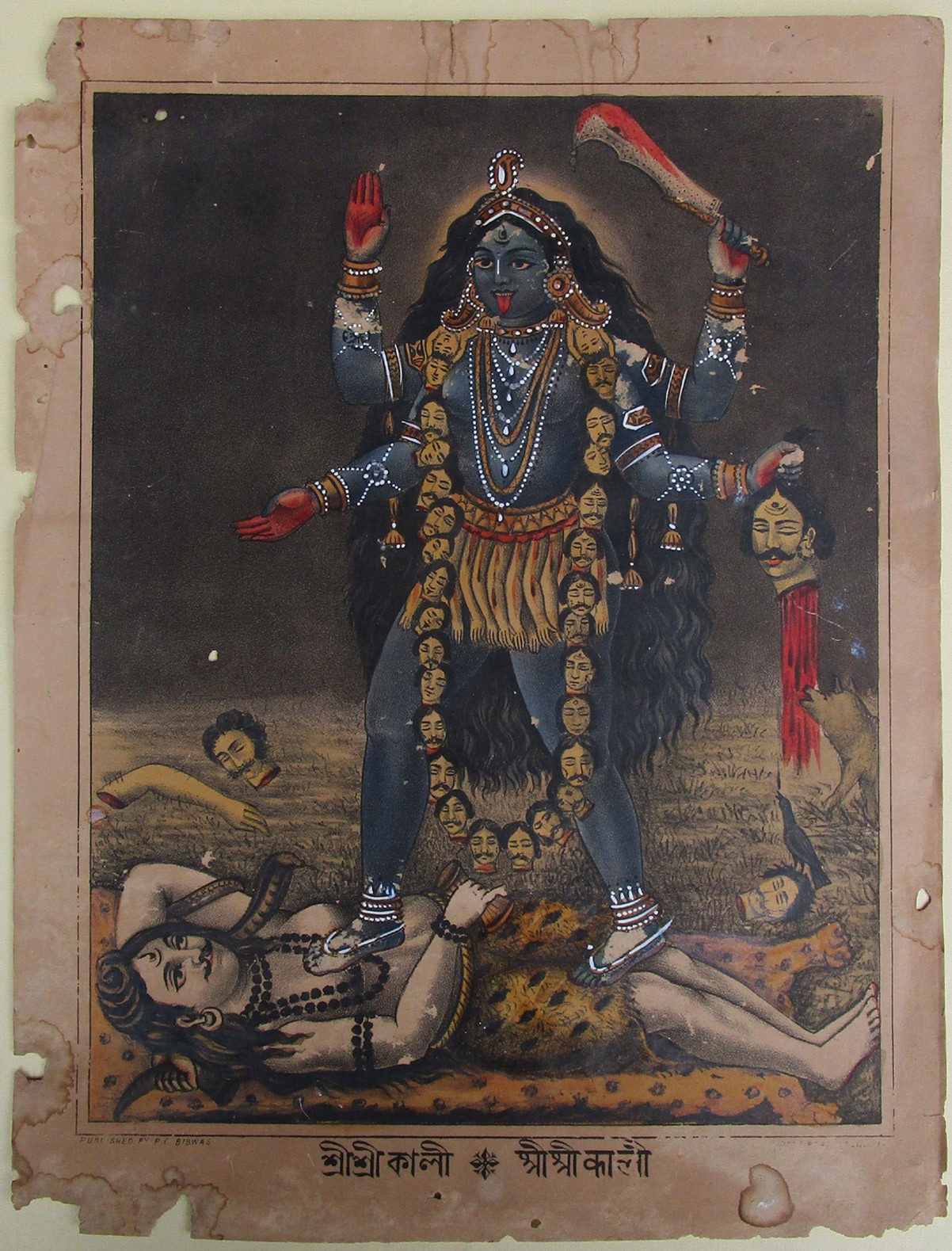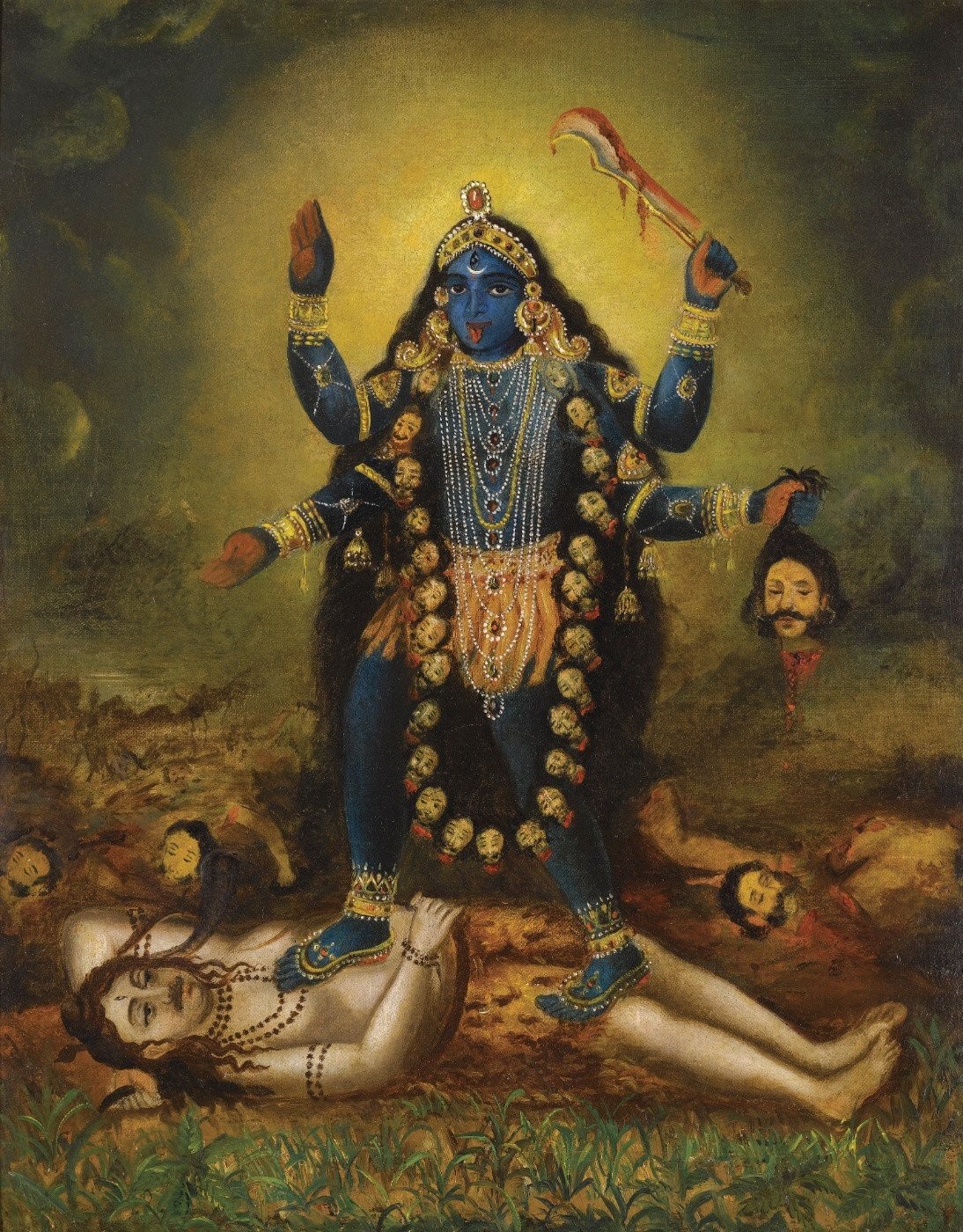Guruji's Commentary on Kālī's Dhyāna Śloka:


Note: the transcription of Guruji's talk was edited and slightly modified for ease of reading.
Having briefly described this yantra, the first given meditation śloka, [or] meditation mantra you can say. It describes how Kālī…yantra form is this one, [and] we are trying to visualize Kali in physical form.
How to visualize Kālī in physical form? It is saguna, meaning the attributes which you are able to see, you are able to feel, you are able to touch, you are able to taste. So that form is described in the dhyānam, in the meditation. Meditation means your eyes are opened, you are looking at different parts of the body and you are trying to understand every part of your body as representing something. That is meditation.
One meaning of Kāla is time, the other meaning of the word Kāla is darkness. You can know what is here and now, but you cannot, what is in the past or in the future. You cannot know what is there and what is there. So all the things that surround you that you are not aware of - are all made by Kālī. What is known is not Kālī, what is not known is Kālī. Unknown, dark. It's dark because it's not known. Even if you open your eyes wide you cannot see, it's such deep darkness. That is Kālī. It is also called Kṛṣṇa. Kṛṣṇa means dark. They are the same - Kṛṣṇa and Kālī.
[śavāruḍhāṁ mahābhīmāṁ ghoradamṣṭrāṃ hasanmukhīṁ
caturbhujāṁ khaḍga-muṇḍa-varābhayakarāṁ śivām
muṇḍamālādharāṁ devīṁ lalajjihvāṁ digambarām
evaṁ sañcintayet kālīṁ śmaśānālaya-vāsinīm]
śavārūḍhām – aruḍha means on top of, śava - a corpse. She's on top of the corpse. What is the corpse that we are talking about? Our body. Our body is not capable of doing anything unless life is there in that. So life is on top of this body occupying this body, sitting on top of the body, making it come alive. Śava means the corpse, the corpse is the body and the awareness that is the meaning of the word śavārūḍhā.
mahābhīmām – mahā means great, bhīmām means fearful. Great fear. Where does fear come from? Unknown. What happens if I die? What happens if I lose my property? What happens if I lose my job. What happens if I become old, if I become infirm? All these fears, great fears - mahābhīmām.
ghoradamṣṭrām - ghora means fierce, terrible; damṣṭrām - teeth. Kali is also the Mother of Speech. The tongue which you cannot see is moving between the hard rocks of teeth which are opening and closing all the time. The tongue has no eyes to see, it cannot see, but it's still moving inside the mouth, not being hurt by them. It knows how to avoid the teeth. ghoradamṣṭrām - terrible grinding stones. damṣṭrām is the teeth.
hasanmukhīm
- hasa means smile, laugh; mukhim - face. She has a laughing face.
caturbhujām - four hands. Why four hands? Don't know.
khaḍga - means the sword; muṇḍa - means, a head separated from the body.
khaḍgamuṇḍa - they are describing what is in each of her hands. In one hand she's holding a sword, in the other hand, she's holding by the hair a person's head. Usually, it's a male head. I think she prefers males. Since she's the life itself, she's standing on top of Śiva or on a corpse or holding a corpse in her hand. She's life itself. Since she's holding the head, the head could not be dead. What is happening is that the blood is coming out of the head. And where is it going? It's going into the earth. So blood is called rajoguṇa, which means mobility. All the mobility is gone, the head is not thinking anymore. Mobility means the movement of thoughts. The movement of thoughts is arrested. But the head is not dead. That is the head being in samadhi, [which] means you are aware but you are not thinking anything. You are not seeing anything, you are not feeling anything – just pure awareness. That is represented by the head held in her hand.
varā [mudrā] – means boon, abhaya [mudrā] – this is abhaya [Guruji is showing an abhaya mudrā]. Vara means I'm giving a boon. Don't be afraid, I'm helping you – varābhayakarām.
So khaḍga - sword, muṇḍa - the severed head, vara - the boon [mudrā], abhaya - don't be afraid [mudrā]. So these are the four hands, [and] she's showing these mudrās to the devotees.
śivām - Śivā, the property of Śiva or the female counterpart of Śiva. The female counterpart. If Śiva is considered unmoving all of space or unmoving time. Time is static. And in that, she creates the movement in time. So she's called Śivā, dīrgham [meaning long sound, i.e. ā]. Not Śiva but Śivā. So she creates the movement and Śiva is static like a corpse. She's moving so she creates movement to unmoving time. That is called Śivā.
muṇḍa mālādharām – muṇḍa - refers to the broken, severed head, it also refers to the ?lower part? muṇḍa if you take it as this one, there are different kapalas there. After the person is dead you put him under the earth or you burn him. In one tradition it burns, in another it is put in the grave. Ultimately what it means is kapala, the skull. The skull is the indestructible part that survives physical death. So she's holding a mālā of skulls. Since they are indestructible they are called akṣaras. Kṣara means decaying, akṣaras means non-decaying, not changing. Cause they are always there, they continue to stay there after death. So these kapalas that she's wearing on her neck as a mālā are the seed letters: aṃ āṃ iṃ īṃ uṃ ūṃ… the 51 letters she's holding… So she's the Mother of Speech.
devīm - Devī means by whom the world is lighted up. By whose presence you can see. If the consciousness is not there, if the awareness is not there the corpse cannot see. I can be there, but I cannot see. Unless the life is present I cannot see. If it is frozen or if it is immobile it is disabled, the life awareness makes it see. The eye of the eye – that's called Devi. By Her, is lighted up this world that's why she is called Devī.
lalajjihvāṁ - the tongue protruding out. There is a story when she wants to make you a poet or a creative person with the tip of her tongue she writes on the tip of your tongue seed letter of Kālī - krīṁ or aiṁ. jjihvāṁ - long tongue; lala means hanging.
digambarām - she's naked, nude, not wearing any clothes. Which means extensive, not confined to a particular point of space or time, she's everywhere. She's not limited in any sense, unlimitedness is shown as a digambara, nude.
dhyāyet - like this, you should meditate upon.
kapālinīm - she's called Kapālī because she wears the skulls on her neck.
kālīṃ - the Goddess called Kālī.
śmaśānālaya-vāsinīm – śmaśāna - is the cremation ground or the burial ground. She lives there, because she's the wife of Śiva and Śiva's abode is śmaśan. Because he's samhara karta when everything that is killed goes to the cremation ground, so that's where Śiva stands. Where Śiva stands Śakti also has to be there.
Source: Guruji's Kālī talk at Devipuram (02-04-2013)









